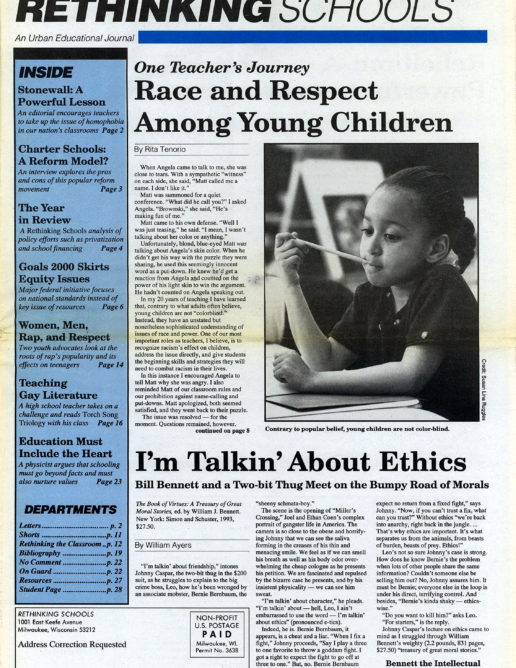Stonewall Rebellion: A Powerful Lesson
On June 28, 1969, police launched one of their periodic raids on the New York gay community. This time the target was the Stonewall Inn, a gay bar in Greenwich Village. But the raid did not proceed as planned.
As the police started escorting patrons into a police wagon, a sullen crowd unexpectedly gathered. A few people started to boo, and some pressed up against the police wagon. The cops shouted at the crowd to get back to the sidewalk, but the crowd didn’t respond. “From that point on, so much happened so quickly as to seem simultaneous,” Martin Duberman writes in his book, Stonewall.
Police hit one of those arrested, a lesbian, on the head with a nightstick. Upset with the unnecessary cruelty, people in the crowd started throwing coins and yelling at the police. One of the drag queens who had been arrested kicked a cop, another jumped out of the police wagon and escaped.
Suddenly, both the crowd and the police realized that the balance of power was different than usual. The crowd was gaining control. And it was angry. The police retreated into the bar for safety. The crowd bellowed “in triumph and pent-up rage,” Duberman writes.
Police reinforcements were sent in and after a violent melee, police regained control. But only for the night. Word of the confrontation spread, aided by media coverage of the unheard-of resistance to a raid on a gay bar. There followed five days of rioting against police harassment of gays and lesbians that came to be known as the Stonewall Rebellion. The modern gay and lesbian movement was born.
This June marks the 25th anniversary of the Stonewall Rebellion. It is a fitting time to pause and contemplate the issue of schools and gay and lesbian rights.
For all its advances, the gay and lesbian movement still has any number of obstacles it must confront. In any listing of such obstacles, one of the top categories belongs to the remaining taboo, in most schools, against even mentioning tolerance and respect for people whose sexual identity is not heterosexual.
How many times have you heard a student use the pejorative “faggot” to put down a classmate? And how many times have you felt the confidence to do anything about it? How many times have you thought about using a book with a gay or lesbian character or theme — and then reconsidered because of potential controversy? How many gay co-workers do you know who fear for their jobs if their sexual identity were public knowledge? How many schools do you know that shy away from all-too-important issues of teenage sexuality and HIV infection because conservatives in the community might raise a stink?
One only has to remember the controversy over the Rainbow Curriculum in New York City to realize that tolerance for gays and lesbians has only advanced so far in our society. In many sections of our communities, our military, and our schools, homophobia remains as powerful as it was among the police who launched the Stonewall raid.
Teachers have the responsibility to take a stance against bigotry and discrimination, and that includes homophobia. How teachers respond to homophobia, however, is a highly individual question. What works in one classroom or community may not work, or may not be appropriate, for another classroom.
In this issue of Rethinking Schools,we offer several articles that we hope will be useful to teachers tackling homophobia. First is an article on page 16 on how high school teacher Marvin Hoffman used the play Torch Song Trilogy. On page 18 is a poem by Chuck Jones on homophobia’s effect on adolescent boys discovering their gay identity. Finally, on page 19 is an annotated bibliography of books with gay and lesbian themes that are appropriate for classroom use.
In 1969, the patrons at Stonewall had little idea that the gay and lesbian movement would soon become an established part of American politics. They were merely reacting against injustice. We can only hope that 25 years from now, teachers will look back on 1994 and wonder why gay and lesbian rights were a taboo subject in our schools. But that will only happen if teachers, like the protesters at Stonewall, take a stand.

